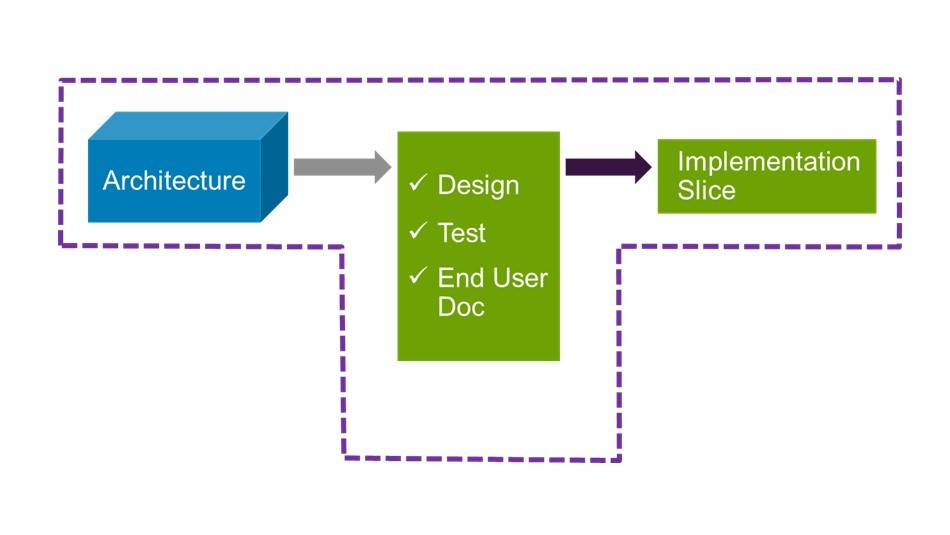Contributing
Development Philosophy
Work in this project is guided by a number of Agile principles and cloud native application development practices.
Develop only what is needed to achieve the goal; make use of concepts, tools and software that are already available. "Stand on the shoulders of giants". Make smart choices for dependencies. Focus on outcomes. Plan with the objective to close the gap between where the project is and where it needs to be. Revisit next steps regularly as the goal becomes clearer and knowledge more complete.
T-Model
The T-Model philosphy is a condensed version of a few core Agile practices that help:
- deliver small increments of work in progress, while
- maintaining known good state
The figure below describes at a high level how this can be accomplished in an Agile development environment:

Architecture
Before starting on a new feature to avoid a lot of confusion during execution, we start with describing a high level architecture. Note that even the architecture work products can be delivered in increments by keeping in mind a few simple principles:
- Architect/Design for Orthogonality
- Separation of concerns leading to well defined APIs
- Enable working in parallel
- Architect/Design for Testability
- Always ask "Is there another way?"
- Follow the DRY (Don't Repeat Yourself) software development principle
- Aim for simplicity
Design-Document-Test (DDT<->TDD)
To ensure the system is delivering what it was required and architected to deliver, it is recommended that each functional increment
- introduces a small design change (such as an API),
- provides user facing documentation on how to build, install and use, and
- adds tests (TDD) to validate the functionality being developed in that increment.
One can run tests (unit test and functional test) locally. Tests are repeatable and automated.
API First
A cloud native application may consist of multiple microservices. Different teams may develop services within the application or external groups may use the API to interact with the application. Hence, it is imperative that the contributors have an API first mentality.
In general, it is expected APIs are well defined, understood and documented. Use tools to separate interface and implementation. This project has used Swagger OpenAPI standard and the tools around it to execute on its API first strategy.
Learn More
Continuous Integration
Code is covered by straightforward CI pipeline that includes repeatable steps such as build, (unit) test and deliver to artifactory.
Support Disclaimer
The code and documentation are released with no warranties or SLAs and are intended to be supported through a community driven process.
Project Guidelines
High level processes are in place to implement the software development principles.
Source Code
Support Channels
For links to support options, including general discussions on Ocopea, debugging, or entering issues that are encountered: